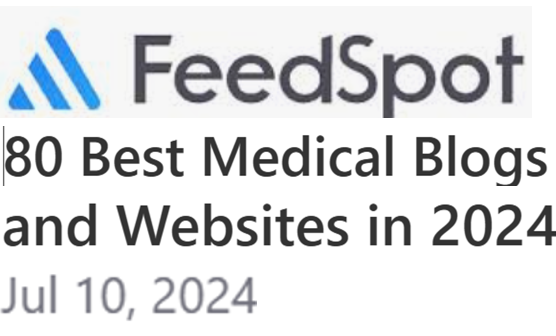Home, sweet medical home
By Jane Sarasohn-Kahn on 28 November 2007 in Uncategorized
The concept of the Medical Home is emerging as an antidote to America’s fragmented health care landscape. Several large employers and physicians are pushing the concept, driven by different incentives but united in the effort. Medicaid plans have become early adopters of the Medical Home, too.
The Medical Home is not a new concept; pediatricians have been lobbying for the concept since 1992, as this paper in Pediatrics defined the idea 15 years ago. It’s akin to a next-gen HMO gatekeeper, with a twist: the Medical Home features a primary care doctor at the center of care, but looks to partner with patients and, where appropriate, their families (think kids, aging parents, chronic conditions).
The Kaiser Daily Health Policy Report cites an article in the Wichita Eagle, Medical home model puts primary care at center, that talks about the medical home. Dr. Rick Kellerman, chairman of the AAFP, is quoted as saying that, “IBM came to us and… said they were not getting a good buy for their dollar in the U.S. What they found is, we have a system that totally devalues primary care. (It) is very uncoordinated… and it does not emphasize preventive services. And with an increase in chronic disease due to the age of the population, childhood obesity and the effects of tobacco, we’re looking in 10 years at a real crisis.”
Thus emerged the Patient-Centered Primary Care Collaborative (PCPCC). The organization’s 50 members include employers, most notably Caterpillar, FedEx, IBM, and Xerox (all engaged pioneers in population health management); national business health coalitions; health plans; pharmaceutical companies; and, the AARP.
Four primary care physician associations are backing the PCPCC: the American Academy of Family Physicians (AAFP), the American Academy of Pediatrics (AAP), the American College of Physicians (ACP), and the American Osteopathic Association (AOA).
The tenets of the Patient-Centered Medical Home (PCMH) are:
1. Access: the PCMH broadens access to primary care doctors while expanding their role as central care coordinators.
2. Access, part two: Physicians will be available, whether face-to-face, by phone or email.
3. Personal responsibility and continuity-of-care: PCMH physicians will be responsibility and accountable for the ongoing care of patients.
4. Preventative: PCMH doctors will work with patients on prevention and health promotion.
5. Coordinating: Physicians will refer patients from the Medical Home to specialists when relevant and necessary, and will coordinate care closely with specialists.
How to migrate to a Medical Home? It takes re-aligning incentives. Note that primary care physicians’ incomes have fallen relative to specialists. The Medical Home would reallocate resources to reward primary care physicians for consultations (whether in person or via phone or email), for coordinating care with specialists, and for outcomes — whether resulting in cost-savings or patient benefits.
Several Medicaid programs have already adopted Medical Homes. In North Carolina’s Medicaid Program, where this model was implemented, evaluations have shown better chronic care management, cost savings, and greater patient satisfaction.
The Healthy San Francisco project has been part of Mayor Gavin Newsom’s promise to expand health care access to uninsured San Franciscans. Operated by the San Francisco Department of Public Health, the program enrolls uninsured people in a Medical Home which becomes their first point of access for health care.
Health Populi’s Hot Points: As with so many health reforms, movement is apace among private sector employers and at the State level. Both employers and State governors have budgets to manage, so the incentives are clear, and the Medical Home concept seems to be delivering. The Medical Home is part of a larger movement among primary care physicians reclaiming their role as the central point for patient care, following several decades of specialist-driven fragmentation (and income reallocation). Watch for the Medical Home to emerge as a component in major employer health plans in 2008 and beyond.






 Interviewed live on BNN Bloomberg (Canada) on the market for GLP-1 drugs for weight loss and their impact on both the health care system and consumer goods and services -- notably, food, nutrition, retail health, gyms, and other sectors.
Interviewed live on BNN Bloomberg (Canada) on the market for GLP-1 drugs for weight loss and their impact on both the health care system and consumer goods and services -- notably, food, nutrition, retail health, gyms, and other sectors. Thank you, Feedspot, for
Thank you, Feedspot, for  As you may know, I have been splitting work- and living-time between the U.S. and the E.U., most recently living in and working from Brussels. In the month of September 2024, I'll be splitting time between London and other parts of the U.K., and Italy where I'll be working with clients on consumer health, self-care and home care focused on food-as-medicine, digital health, business and scenario planning for the future...
As you may know, I have been splitting work- and living-time between the U.S. and the E.U., most recently living in and working from Brussels. In the month of September 2024, I'll be splitting time between London and other parts of the U.K., and Italy where I'll be working with clients on consumer health, self-care and home care focused on food-as-medicine, digital health, business and scenario planning for the future...